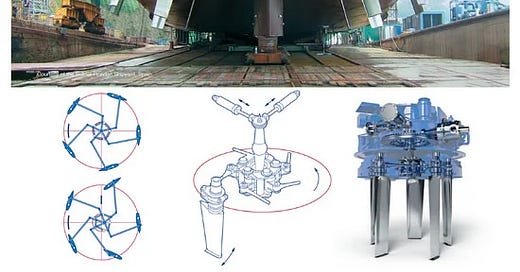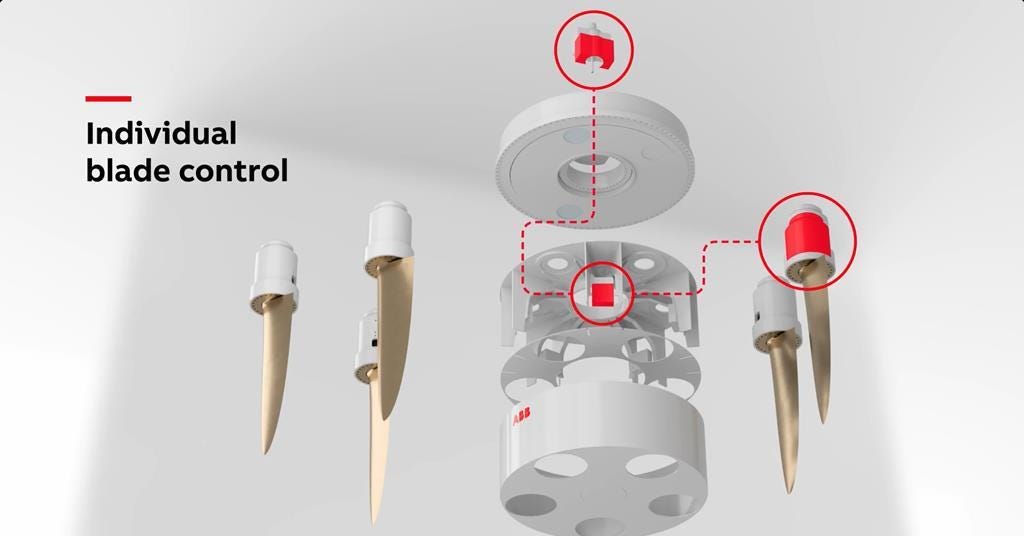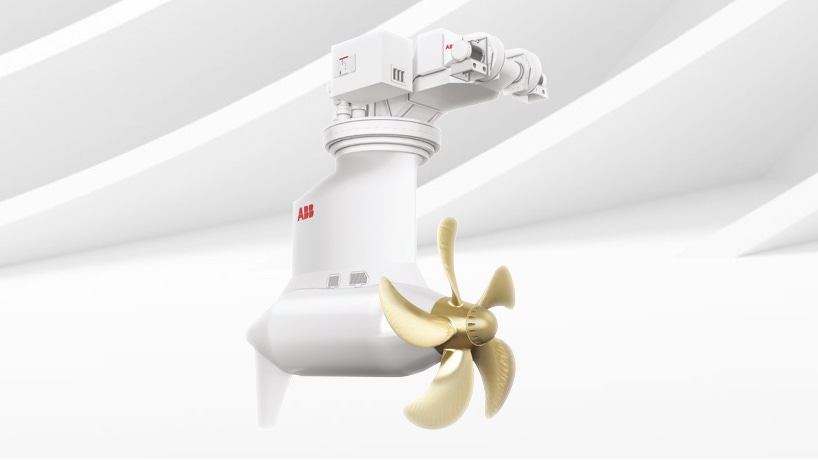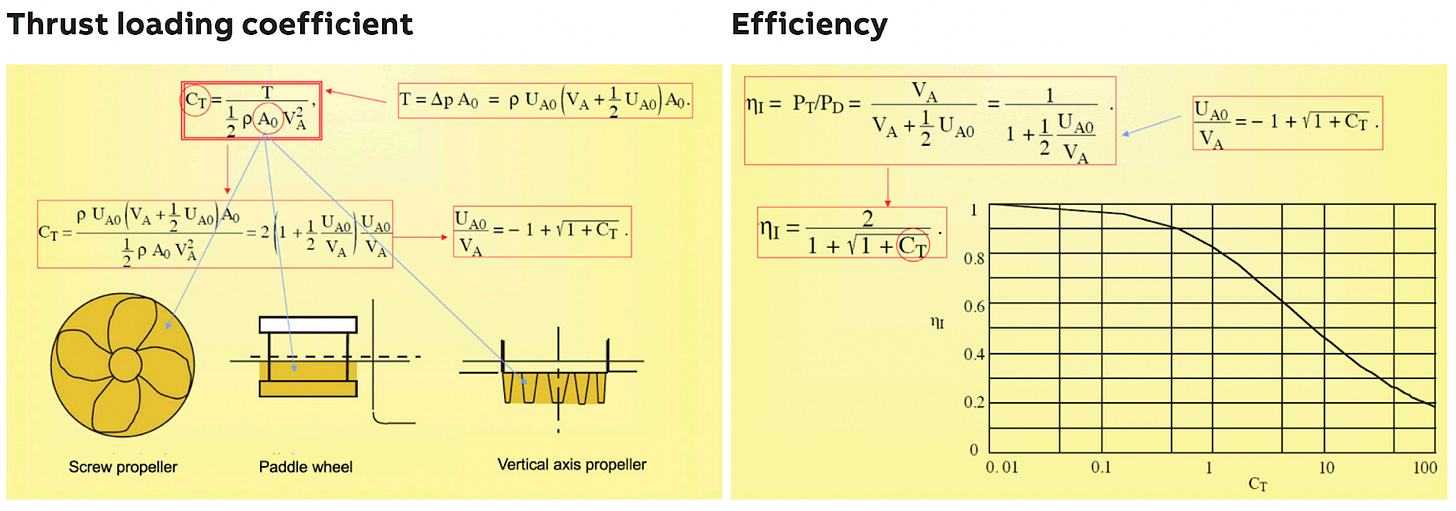👋 Happy Saturday! This weekend’s issue focuses on biomimicry with examples in marine propulsion, filtration, and more.
Every ship that crosses the ocean is part of a vast, interconnected system that keeps our modern world afloat—moving goods, connecting economies, and feeding global supply chains. The shipping industry is also responsible for nearly 3% of the world’s greenhouse gas (GHG) emissions, contributing more GHG emissions than countries like Canada (1.41%) and Australia (1.08%).
In 2023, the International Maritime Organization (IMO) revised its greenhouse gas reduction targets by committing to net-zero emissions by 2050 and setting aggressive interim milestones for 2030 and 2040. Achieving these goals would require significant improvements in ship design, particularly around technical advances in low-emission fuels, energy storage systems like batteries & fuel cells, and propulsion technology.
The current industry standard in propulsion technology are screw propellers. For decades, nearly every ship in the world has relied on screw propellers for propulsion. They’ve been the standard of maritime propulsion with continuous incremental improvements leading to designs that are highly efficient, reliable, and predictable. With growing pressure from environmental regulations and the demand for greater efficiency however, the industry is exploring alternative architectures that can unlock radical gains in performance.
ABB, a Swiss electrification and automation company, is developing a new propulsion system that features propeller blades mounted orthogonally to the traditional shaftline propulsion axis. This change in the axis of rotation reduces frontal surface area and minimizes the need for ruddering to change direction and navigate. The propeller design, tradenamed as Dynafin, incorporates five hydrofoils where the angle of each blade is controlled by independent BLDC motors.
The design builds upon cycloidal propellers, which convert shaft power into fluid acceleration by rotating around an axis perpendicular to the direction of fluid motion. One well-known example is the Voith Schneider Propeller (VSP), a specialized marine propulsion system commonly used in tugboats and ferries for its great maneuverability and ability to change thrust direction near-instantaneously.
ABB describes the Dynafin concept as "essentially a cycloidal propeller with individually controlled blades”.
Cycloidal propulsion refines the ideas behind azimuthal thrust systems. Azimuthal systems are a type of propulsion where the entire propeller assembly can rotate to direct thrust in any direction. Unlike regular screw propellers, which rely on a fixed shaft and a rudder to steer, azimuthal systems eliminate the rudder entirely. Instead, a second motor rotates the housing of the propeller, allowing the thrust to be redirected by simply turning the assembly itself. This provides better maneuverability especially at low speeds, but comes with trade-offs. Azimuthal propulsion generally lacks the streamlined design of shaft-line propulsion. The additional housing often increases drag due to poor streamlining, a problem that compounds when the assembly moves against the direction of motion while steering.
In systems like the Dynafin, the blades are mounted perpendicular to the vessel's motion, where the individual angle of each blade determines the overall vector of thrust. This design offers a significantly better thrust-to-drag tradeoff during steering. Early results show the Dynafin system to be up to 25% more efficient than traditional shaftline propulsion. Development of Dynafin units, ranging from 1 to 4 MW, highlight the promise of a new design as the underlying technologies (CFD, power electronics, electric motors, etc.) continue to advance,
What’s neat about the Dynafin concept is that the propeller design was inspired by the tail fins of whales. As a whale swims and moves its tail, the fins can make small individual movements to change direction while they are producing thrust. With independent control of each blade, the system can mimic the high-efficiency movement of a fishtail while dynamically adjusting blade motion—such as eccentricity, advance ratio, and angle of attack—to suit different vessel configurations.
If you want to learn more, the Dynafin design whitepaper has plenty to dig into.
Interesting Video: Fabrication of a Ship Propeller
On the topic of marine propulsion, watch the step-by-step fabrication of industrial ship propellers from casting to assembly.
Interesting Paper: Mobula Ray Inspired Filter Design
The filter combs of mobula rays contain a natural structure that may improve the selectivity and permeability of industrial water filters. Selectivity refers to what particles a filter can keep out, while permeability is how much energy it takes to pass a fluid through the filter. Mobula rays must breathe while simultaneously eating, accomplish this by swimming with their mouths open. Above a critical swimming speed, these combs generate vortices that in nature, spin solids like plankton deeper into the mouth while filtered water flows toward the gills. In industrial applications, this design could enable highly efficient filters that rely on reaching a specific pumping speed to operate effectively. The full paper can be found here (paywalled), and includes a demonstration video with the design in action.
Thanks for reading to the end - if you’ve enjoyed the mechanics of these insights, consider sharing this issue with a fellow enthusiast!










